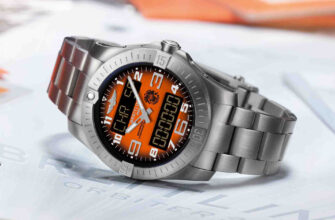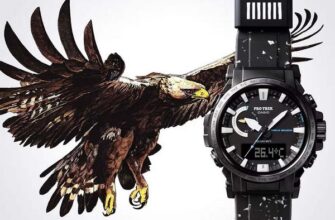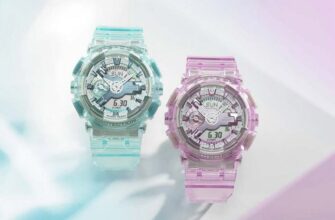Probably, this has happened to everyone: it’s dark all around - whether it’s a deep night, or an underwater abyss, or, for example, an underground passage, a cave - in general, not a single thing, but you desperately need (or simply want to) look at the clock. Seeing is not a problem, but nothing is visible. Turn on the lights, wield a flashlight, strike a match - all this is not right ... The backlight of the dial comes to the rescue.
She, the backlight, is of three main types. The first type is electroluminescent: you press a button and the watch is lit by a battery-powered LED inside the watch. The second is phosphor: you don't need to press anything, the hands and indexes are covered with a layer of luminescent substance, "charged" from the previous stay in the light. The third is gas luminescent. Let's talk about her.
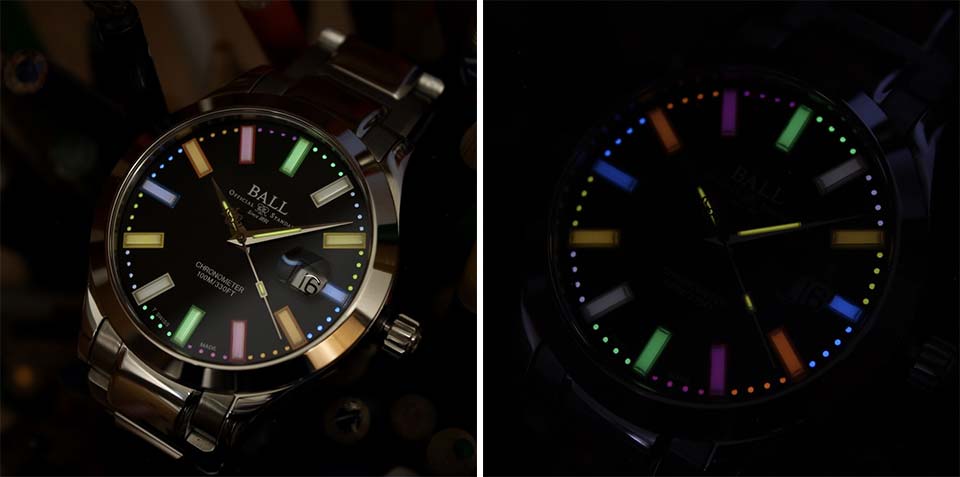
Operating principle
The principle is the following. A small tube (usually made of special glass) is covered from the inside with a very thin layer of phosphor. Then this micro tube is filled with gas, namely tritium, and hermetically sealed. Everything can be installed in the intended place on the dial - on the arrow, on the hour mark. The point is that tritium, a heavy isotope of hydrogen, H3 (sometimes the designation T is used), is unstable, it decays, and the phosphor that is on the walls is “bombarded”. And let there be light!
Yes, yes, this beta decay is radioactive! However, there is nothing to fear, in the case of tritium, it is absolutely harmless. The energy of the electrons released during the decay is so small that it is almost completely absorbed by the "attacked" phosphor and the walls of the vessel. And even having broken free, the flow of beta-particles almost instantly fades, and if it accidentally enters a living organism (for example, due to swallowing a microtube), it is almost immediately removed from it. Note: chewing glass tubes is not recommended, no matter what they are filled with ...
At the same time, the beta decay energy of tritium is quite sufficient to cause the phosphor to glow. Moreover, the glow of one or another brightness and one or another color. The brightest is green, followed by, in descending order, yellow, white, blue, orange, red, blue.
The advantages of tritium illumination are obvious. Unlike LED, it does not require an internal power source - batteries. Unlike phosphor, it does not require preliminary "recharging" in the light. What is more important is the service life. Watches with LEDs need to be replaced every few years, the most common of the luminescent coatings - SuperLumiNova, created by the Japanese company Nemoto in 1993 - "fades" in 10-15 years, but the tritium backlight lasts 20-25 years, and then and longer.
Short story
The method itself was invented by Swiss chemists Walter Merz and Albert Benteli in 1918. Another scientist, also Swiss, only a physicist, Oskar Thuler, improved the technology and in 1969 founded the company mb-microtec AG. The letters m and b are the initial letters of the names of Merz and Benteli, and mb-microtec AG became the patent holder, according to which the technology was called trigalight. At first, the demand was for equipping such illumination with products far from the watch industry - for example, a Swiss assault rifle.
But the real fame came to trigalight thanks to the watch. Tritium microtubes (they are referred to as GTLS), which are lined with hands, hour markers, numbers, illuminate the dials of BALL, Traser watches, as well as many Vostok watch models.
Interest in gas-light luminescence is high not only in the civilian environment, but also among the military. In this regard, it is worth noting one of the versions of tritium illumination - LLT technology, which differs from trigalight in details, but is patented independently. LLT stands for Luminox Light Technogoly, belongs, of course, to the Luminox watch company (USA), and was first used in the late 1990s under a contract with the US Navy.

Examples of tritium backlit clocks
BALL Original
Products of the company BALL, Swiss with American roots, undeniably belong to the circle of the world watch elite. This model, like most BALL watches, is characterized not only by trigalight illumination, but also by high shockproof characteristics (up to 7500 G), protection against magnetic fields (up to 1000 Gauss), water resistance (up to 200 m), as well as exemplary accuracy of movement (in according to the COSC standard).
Let us pay attention to the fact that not only the dial is equipped with tritium illumination, but also the diving bezel made of sapphire glass. In the dark, the green color of the latter, like the same color of the dial, is seen almost black, but all the micro tubes glow bright green. Plus reliable automatic caliber BALL RR1102-CSL, 43 mm steel case with sapphire crystal on the front and engraving on the case back (image of a diver), integrated steel bracelet.
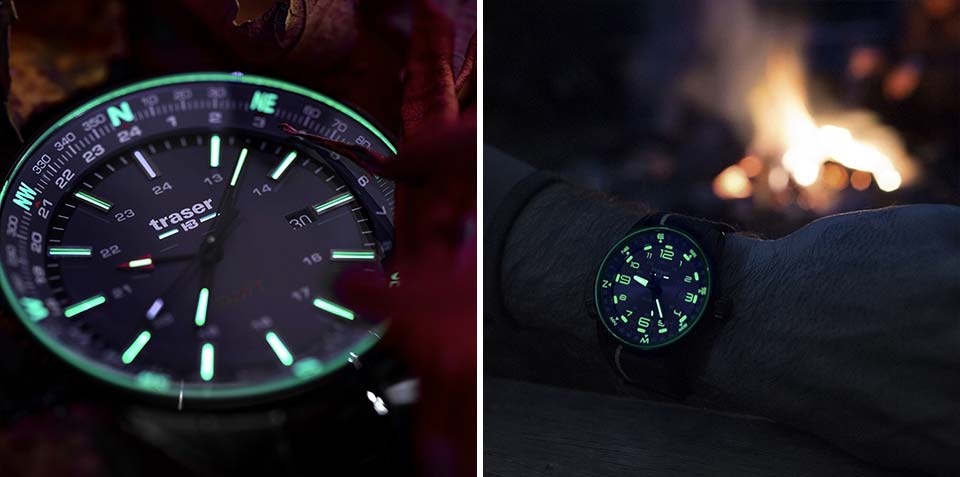
Traser P67 Diver Automatic
Another Swiss company working with trigalight. There is also a steel case (as much as 46 mm) and a bracelet, also a sapphire crystal and a solid back cover, also a unidirectional bezel (made of ceramics), there is no shockproof and antimagnetic, but water resistance is as much as 500 m. As a result, there is an automatic helium valve (position "10 hours"). Tritium illumination in this model is complemented by SuperLumiNova luminescence. The watch is powered by the proven Sellita SW200-1 self-winding movement.
Vostok Europe Lunokhod-2
The Vostok Europe company lodges in Lithuania and at the same time focuses largely on the historical Soviet theme. So the proposed model is dedicated to the Soviet Lunokhod-2, which in 1973 literally traveled around the satellite of our planet and transmitted a lot of priceless scientific information to Earth. The massive (diameter 49 mm, thickness 17,5 mm) steel (PVD-coated) watch is powered by the Seiko NH35A automatic caliber. In the presence of an automatic helium valve, mineral glass of special hardening and increased to 3,5 mm thickness - no wonder, because the water resistance is 300 m.
There is also an anti-shock device for the balance axis. And, of course, trigalight. The watch is offered on a leather strap and comes with an additional silicone strap, a screwdriver to replace the strap and a waterproof case.
We also mention that tritium illumination is also used in some series of Vostok Komandirskie watches manufactured by the Chistopol Watch Factory. And let's go across the ocean.

Luminox Bear Grylls Survival MASTER Series
As we have already reported, Luminox uses their own modification of tritium illumination - LLT, however, which differs little from trigalight. We chose the model for the example because of its special unusualness. This quartz chronograph was created in collaboration with the British extreme traveler, writer, TV presenter Bear Grylls, as evidenced not only by the "Never Give Up" motto on the dial, but also - even more clearly - a real compass built into the polyurethane strap. Black and orange tones, carbon-reinforced plastic, 45 mm in diameter and only 98 g in weight, sapphire crystal, perfectly clear tritium illumination, 300-meter water resistance.

